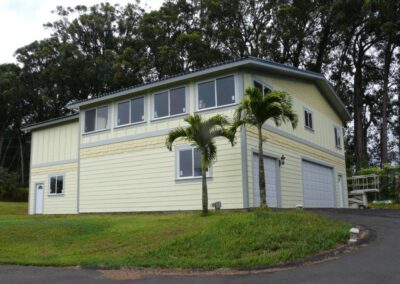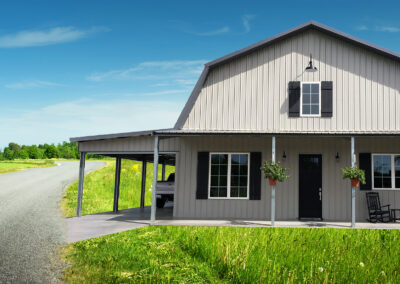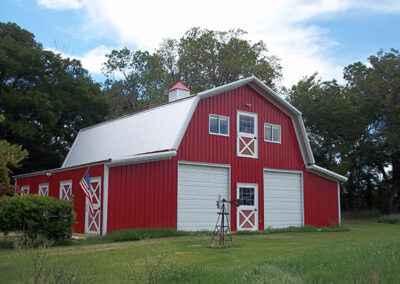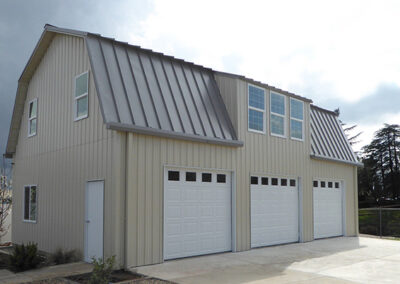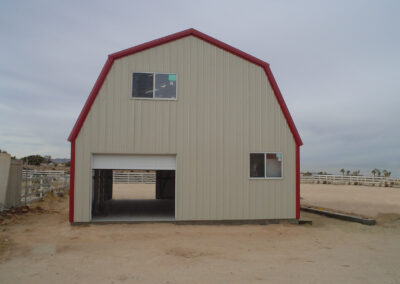
two story Steel buildings
QuickSteel Buildings offers great flexibility in options and accessories for your building, including a variety of 2-story steel building options. Whether you want a cupola, extended overhangs, a wainscoting accent, a really steep roof, let us show you how easy we make it.

Two-Story Steel Buildings
How do multi-level steel buildings work?
If metal structures could not be more than one tall story, then each major city’s skyline would look drastically different. Not to mention the elevator business would have not made it. It’s because steel is so powerful that today we’ve got these high-rises and skyscrapers.
You may be asking about an existing building, however, and the answer depends, among other things, on the building and the basic design load. Multi-story steel structures have several advantages if you have planned correctly. Let’s look at those advantages and some principles of design to build a multi-story structure or build added floors on an existing one.
Design Rules To Follow for Two-Story Steel Buildings
Typically, the design of a two-story building begins with the initial design of a building, but if the original design is for a single-story building, you can still build it as if more floors will be added in the future.
Plan as if you are constructing a multi-story building as you determine the building specifications.
Consider the possibility of steel construction expansion at a future date and design a stronger basis and structure when choosing grids and performing preliminary sizing.
Ground circumstances affect the design of a multi-story building significantly.
The weight and price of a structural frame per floor area unit rises with height due to the disproportionate increase in wind loading.
Due to its lateral stability when used as a constant metal frame, steel is particularly suitable for multi-story building. The continuity of the space between the beams and columns limits the sway of the frame. Another alternative is to construct a braced frame for lateral and torsional load resistance.
Vertical bracing transfers horizontal forces to the floor and offers resistance to swaying.
At each level of the story, horizontal bracing braces the horizontal frame through the floor plates and transfers horizontal forces to the vertical bracing planes.
In theory, for resistance in both directions and torsion resistance around the vertical axis, at least three vertical bracing frames are needed. Usually, more than three frames are needed for real-world use to provide the suitable quantity of resistance.
The elevated strength-to-weight ratio of steel is another benefit. Building a multi-story constructing with concrete needs highly dense walls to guarantee that the building does not collapse under its own weight. The need for dense walls reduces the quantity of usable square footage within the structure and takes up more room on the construction site.
Why A Two-Story Steel Building?
The multi-story high-rise building only became possible when the lift or elevator was invented. Without a mechanical way to access anything above a couple of stories, the high-rise would exist is doubtful. In addition to the reality that most of us are unwilling or unable to climb more than three or four stairway flights, there are problems of accessibility for structures without an elevator.
The cost of property has likely pushed most of the structures up rather than outward as much as the elevator helped. What are the other benefits of two-story metal construction?
Within a framework, you can improve storage ability.
By enabling specialized use from floor to floor, additional stories improve the profitability of a structure.
For many significant towns, multi-story structures generate an identity.
To fulfill constraints or add architectural beauty, you have more design flexibility.
However, without the strength and durability of steel, without buying more property and producing huge low-rise buildings, you would not have any of these benefits. More than most concrete or stone houses, steel can resist wind loads. Steel is also a more solid material that carries load better than concrete with the capacity to carry more weight and thus more stories.
Steel also has the reclamation and reuse benefit. Recycled steel is as powerful as fresh steel, and by repeated recycling it never loses that power. Using steel eliminates tons of landfill waste and decreases the need for iron mine.



